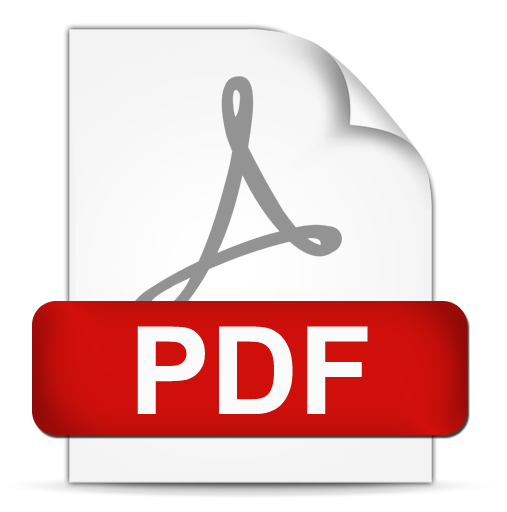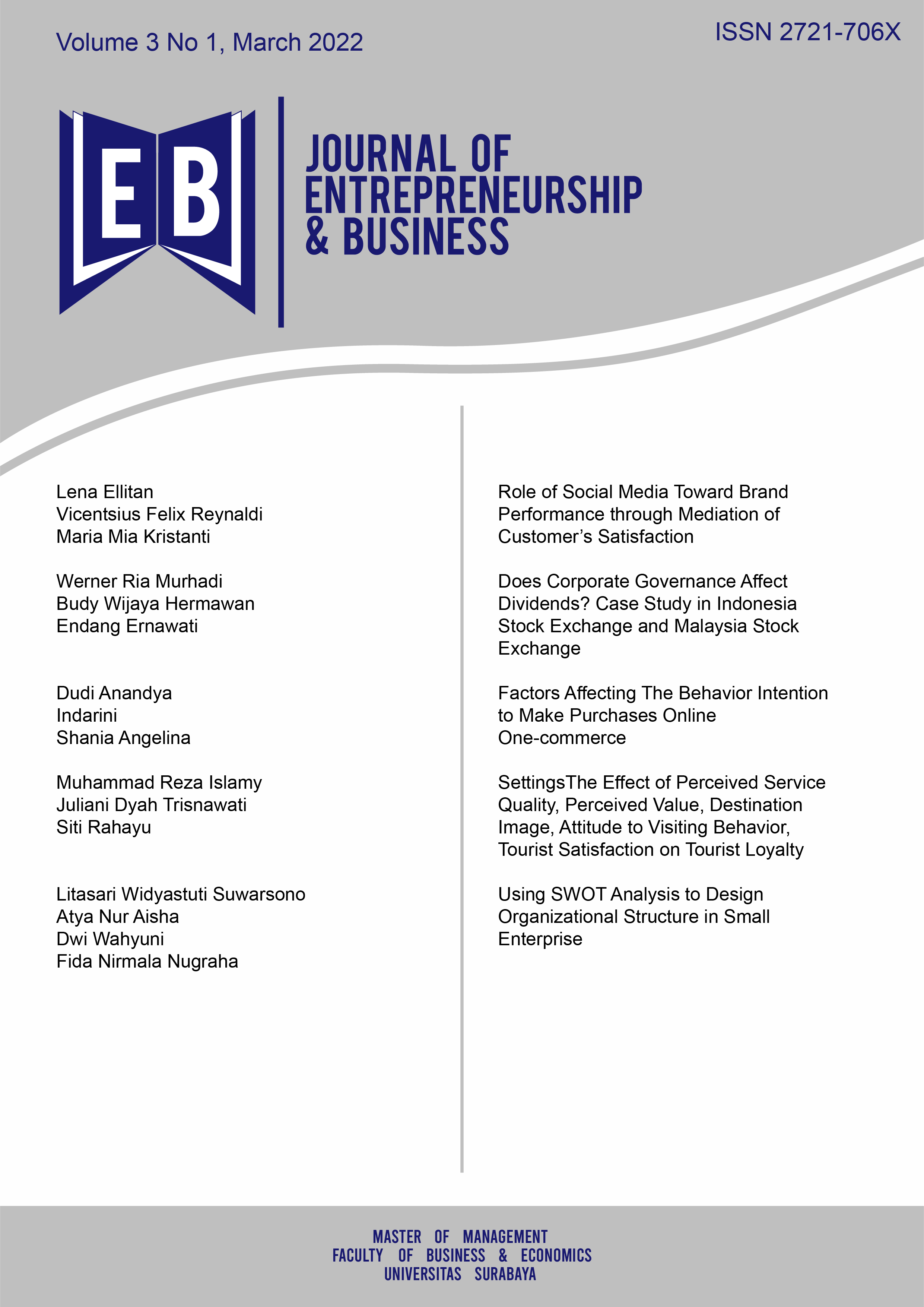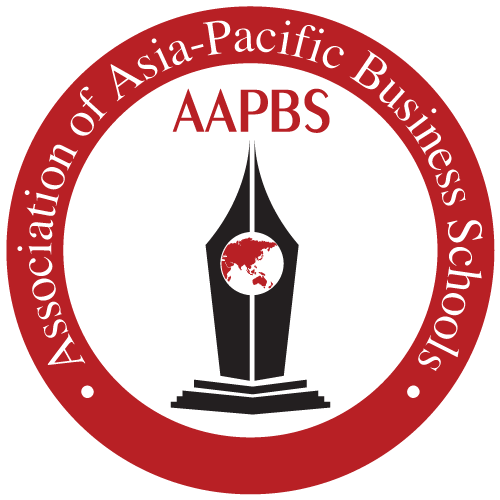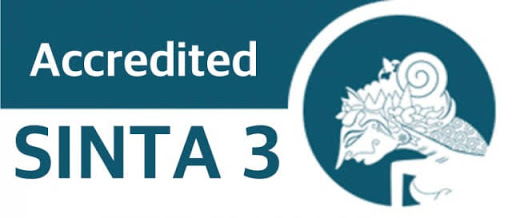Using SWOT Analysis to Design Organizational Structure in Small Enterprise
 Abstract Views:
933 times
Abstract Views:
933 times
 PDF Downloads:
1363 times
PDF Downloads:
1363 times
Abstract
One of the biggest challenges of MSMEs is how to manage its resources to increase their business. Ani's Craft, already survives for 6 years now faces challenges to growth because lack of strategic planning, ineffective of HR management and unstructured organizational design. This study aims to design an organizational structure based on strategy that will help the small enterprise to growth. The study began with identifying the internal and external factors that influence its business. Result shows the strategy that fits the conditions was the WO strategy. New organizational structure was proposed that emphasize the importance of company's needs by adding marketing and finance divisions.
Downloads
References
ASEAN. 2021. Creative Economy Culture, Identity and the Business of Creativity. October-November 2021. ASEAN.
Asian Development Bank. 2020. Asia Small and Medium-Sized Enterprise Monitor 2020. Asian Development Bank.
Creative Economy Agency. 2018. Opus Ekonomi Kreatif Outlook 2019. Creative Economy Agency.
Daft, R. L. 2021. Organization Theory & Design Thirteenth Edition. Cengage Learning.
Daryanto, G. T., Kurniati, D., Oktoriana, S. 2021. The Marketing Strategy of Waste-Processed Craft Product in Pontianak City. SOCA: Jurnal Sosial Ekonomi Pertanian 15 (3): 458-469.
Dodge, H. R., & Robbins, J. E. 1992. An empirical investigation of the organizational life cycle. Journal of Small Business Management 30(1): 27.
Foster, C. 2018. Organizational design in business: a new alternative for a complex world. Business Expert Press.
Ivancevich, J. M., & Konopaske, R. 2013. Human Resource Management Twelfth Edition. McGraw-Hill.
Karami, B. A., & Gustomo, A. 2020. Design of Organizational Structure and Job Description for Human Capital Management Strategy for Small Medium Enterprise in Creative Industry: RA Planner Company Case. European Journal of Business and Management Research 5(5).
Kartika, R., Nur, F. H. E. P. M., & Fauzi, L. N. 2021. Building Consumers’ Awareness on Local Creative Industry Products. In 4th International Conference on Sustainable Innovation 2020-Accounting and Management (ICoSIAMS 2020): 406-410.
Mosca, L., Gianecchini, M., & Campagnolo, D. 2021. Organizational life cycle models: a design perspective. Journal of Organization Design 10(1): 3-18.
Nugraha, F. N., Aisha, A. N., & Suwarsono, L. W. 2018. Design of organizational structure based on environmental factors on software micro business. In International Conference on Family Business & Entrepreneurship 2018.
Rangkuti, F. 2017. Teknik Membedah Kasus Bisnis: Analisis SWOT. Gramedia Pustaka Utama.
Suwarsono, L. W., Aisha, A. N., & Nugraha, F. N. 2018. Business Process and Organizational Characteristics on SMEs (Case Study: A Digital SME’s Community in Bandung). Advances in Social Science, Education and Humanities Research 197: 293.
UNDP Indonesia. 2020. Impact of COVID-19 Pandemic on MSMEs in Indonesia. UNDP Indonesia.
Zutshi, A., Mendy, J., Sharma, G. D., Thomas, A., & Sarker, T. 2021. From Challenges to Creativity: Enhancing SMEs’ Resilience in the Context of COVID-19. Sustainability 13(12): 6542.

This work is licensed under a Creative Commons Attribution 4.0 International License.
Articles published in Journal of Entrepreneurship & Business are licensed under a Creative Commons Attribution 4.0 International (CC BY) license. You are free to copy, transform, or redistribute articles for any lawful purpose in any medium, provided you give appropriate credit to the original author(s) and the journal, link to the license, and indicate if changes were made.
Authors submitting to this journal agree to make their work freely available under the CC BY 4.0 license, ensuring broad dissemination and reuse. The full license details can be accessed at https://creativecommons.org/licenses/by/4.0/.
This ensures that they receive the maximum dissemination because there are no barriers to access. This license allows readers to disseminate and reuse the paper, but always requires them to grant the authors and the first publication full credit.
While JEB upholds ethical publishing standards, the responsibility for ensuring originality and compliance with copyright regulations lies with the authors. The journal is not liable for any legal claims related to the content of published articles.
For further inquiries, please contact the editorial team.

 DOI:
DOI:











